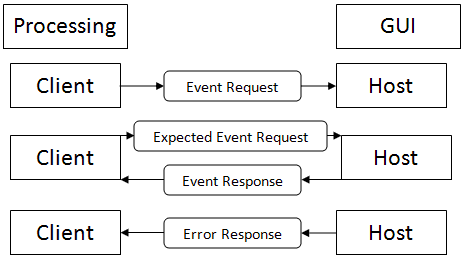The X Windowing System
From Computing and Software Wiki
The X Windowing System’s main purpose is to provide an interface between a client application (such as a desktop environment), which can take advantage of the client CPU’s power, and a host, which takes advantage of the host’s native system’s display hardware. It provides basic functionality like… in a standardized API which allows developers to relatively easily create GUI applications. In short, the X Windowing System will run all the logic behind an application on one client machine while displaying the results on and poling for input from another host machine. This leads to some major security concerns about the communications between the client and host themselves and also how to run an X Windowing host in such a way that does not open a huge security hole in your system. Today, the client machine can be, and often is, the same machine as the host machine. However, the focus of this article will be on the networking side of the X Windowing System.
Contents |
What is the X Windowing System?
Definitions
- Host: The machine which is displaying the X Windowing application. The host must be listening for client X Windowing application requests.
- Client: The machine which is running the logic of the X Windowing application. The client must send a request to the host in order to display an X Windowing application on it.
How to use the X Windowing System
Client Server Relationship
Communication Protocols
The basic idea behind the communication protocols between clients running the logic of the application and hosts displaying the application is to provide a way for the client to send information about what needs to be displayed on the host to the host while the host will send any input from the user, such as mouse clicks and keyboard strokes, back to the client for the client to interpret.
Basic Protocols
- The X client makes a request, which is 4 bytes long, for a certain event to happen on the host. This event can be anything from creating a window to changing what’s being displayed in a window to closing the window. In order to make this process more efficient, there is no response sent from the host to the client saying that the request has been successfully executed. It is left to the network layer, which can be unreliable, and is assumed to get the packets to the host. Some updates will not make it from the client to the host and hence there can be some strange screen artifacts which occur as some requests are processed and others aren’t.
- There are some requests for which the X host must respond to the client, also in multiples of 4 bytes, with information. When an expected event occurs, such as a mouse click or key stroke, the X host must send information about that event back to the client. Again, in order to keep network traffic to a minimum, the X host will only send information back to the client about expected events. However, the expected event which occurred may have been on a different part of the X Windowing hosts screen. This can lead to some major security breaches which the user of the X Windowing system could be unaware of. For example, if the user is expected to enter a password in one application that’s running on the user’s host, the keystrokes of that password could be “intercepted” by another application running on the host which would then be sent back to whatever client machine is running the other application.
- There is one last message which is sent between X clients and X hosts. If there is any error on the X host, there needs to be a way for the host to tell the client that the error occurred. This is taken care of by the error response message. This message is the same size as a normal event response message, but is sent to the error handling routine of the X client.
References
External Links
See Also
Manselnj 18:47, 13 April 2008 (EDT)

